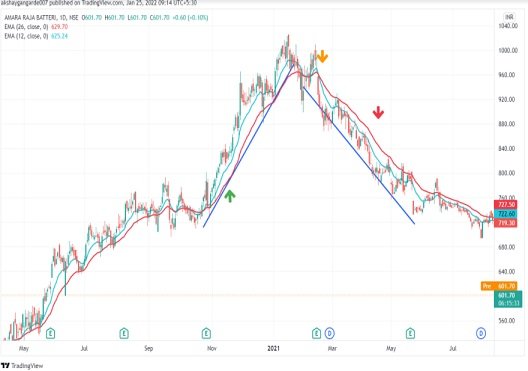Top 5 Indicators of an Impending Bear Market

Spotting a bear market before it strikes can save investors from heavy losses. By watching key indicators like stock index divergence, economic downturns, bond yields, investor sentiment, and corporate earnings, you can better prepare for market turbulence. Ready to uncover these crucial signals? Additionally, if you want to know more about investments and firms, you may visit gainator.org/.
1. Divergence in Stock Indices
Divergence in stock indices occurs when major stock market indices, like the S&P 500, Dow Jones Industrial Average, and Nasdaq, begin to move in different directions. For example, the S&P 500 might be showing gains, while the Nasdaq is trending downwards. This divergence can indicate that investors are becoming selective, favoring certain sectors over others, and could be a precursor to a broader market downturn.
One historical instance is the divergence seen during the dot-com bubble in the late 1990s and early 2000s. While technology stocks in the Nasdaq soared, traditional stocks in the Dow Jones did not see the same level of enthusiasm, signaling underlying issues. Such divergence can suggest that the market is losing its broad-based support and becoming more fragile.
Investors should monitor these patterns carefully. If you’re noticing that only a handful of sectors are driving market gains while others lag or decline, it might be time to reassess your investment strategy. Have you observed any recent divergences in the indices? Paying attention to these can help you anticipate potential market corrections.
2. Economic Downturns and Recession Signals
Economic downturns often precede bear markets. Key indicators such as Gross Domestic Product (GDP) contraction, rising unemployment rates, and declining consumer spending can signal a recession is looming. When the economy shows signs of slowing down, businesses struggle, profits fall, and stock prices follow suit.
Take the 2008 financial crisis, for example. Before the stock market crash, there were clear signs of economic distress: the housing market collapsed, banks faced liquidity crises, and unemployment rates began to climb. These economic indicators were clear signals of trouble ahead. Similarly, the COVID-19 pandemic in early 2020 saw a sharp economic downturn with widespread business closures and job losses, leading to a severe but brief bear market.
It’s essential to stay updated on economic reports and forecasts. Are you seeing signs of economic slowdown in current reports? Keeping an eye on GDP growth rates, employment statistics, and consumer confidence indices can help you gauge the health of the economy and prepare for potential market declines.
3. Bond Market Yields and Inversion of the Yield Curve
The bond market offers crucial insights into future economic conditions. Typically, long-term bonds have higher yields than short-term bonds due to the risks associated with time. However, an inverted yield curve, where short-term bond yields exceed long-term yields, has historically been a reliable predictor of recessions.
An inverted yield curve indicates that investors expect economic growth to slow significantly. This phenomenon occurred before several past recessions, including the 2007-2008 financial crisis. When the yield curve inverts, it reflects a lack of confidence in the economy’s near-term prospects and suggests that investors are seeking the relative safety of long-term bonds.
Monitoring the yield curve can provide early warnings of economic trouble. Have you checked the yield curve lately? Understanding its implications can help you make informed investment decisions. If you notice the yield curve inverting, it might be wise to review your portfolio and consider more conservative investments.
4. Investor Sentiment and Market Psychology
Investor sentiment plays a critical role in market movements. Tools like the Volatility Index (VIX), often referred to as the “fear gauge,” measure market volatility and investor anxiety. High VIX values indicate increased fear and uncertainty among investors, which can precede market downturns.
Market psychology can drive significant market movements, often beyond what fundamentals would suggest. During times of high anxiety, investors may sell off assets rapidly, leading to sharp declines. For instance, during the early stages of the COVID-19 pandemic, the VIX spiked dramatically as panic set in, resulting in a swift market decline.
Understanding investor sentiment can help you anticipate market shifts. Are you noticing heightened market volatility or spikes in the VIX? These indicators can provide valuable insights into investor behavior and potential market trends. Staying attuned to sentiment indices and market psychology can help you better navigate turbulent times.
5. Corporate Earnings and Profit Warnings
Corporate earnings reports are vital indicators of a company’s health and, by extension, the broader market’s condition. Declining earnings or frequent profit warnings suggest that companies are struggling, which can lead to declining stock prices and, eventually, a bear market.
During economic slowdowns, companies often face reduced consumer spending, higher costs, and tighter profit margins. For example, during the 2018 trade war, many companies issued profit warnings due to increased tariffs and supply chain disruptions. These warnings often led to stock price declines and signaled broader economic issues.
Monitoring corporate earnings reports and profit warnings can provide early signals of market stress. Have you seen recent declines in company earnings or frequent profit warnings? Keeping track of these reports can help you gauge the market’s health and make informed investment decisions. If companies are consistently missing earnings expectations, it might be time to adopt a more cautious investment approach.
Conclusion
Staying ahead in the market requires vigilance. By monitoring indicators like stock index divergence, economic health, bond yields, sentiment, and earnings, you can navigate potential bear markets with confidence. Keep informed, consult experts, and make strategic decisions to safeguard your investments.












